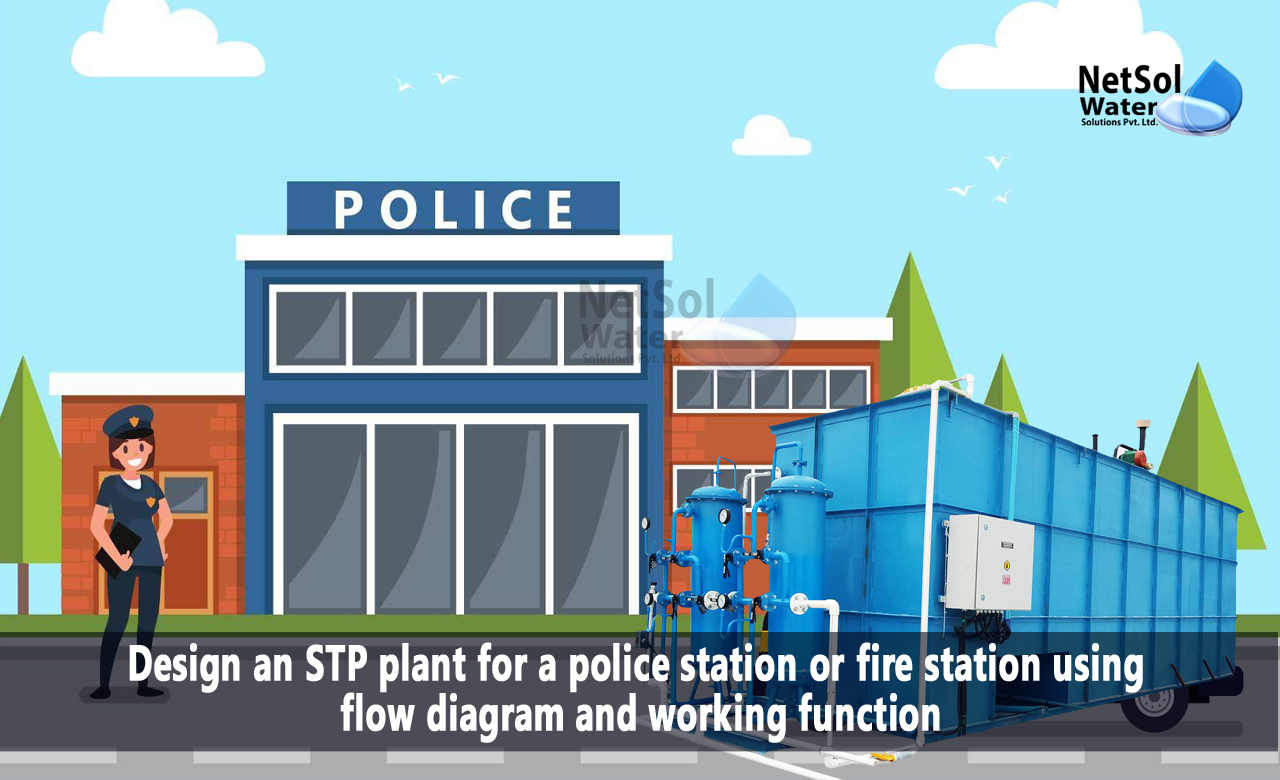Design an STP plant for a police station or fire station
Sewage treatment plants are an essential component of urban infrastructure that helps in treating wastewater generated from residential, commercial, and industrial areas. Police stations and fire stations are also important facilities that serve the community, and the wastewater generated from these facilities needs to be treated before disposal.
In this blog, we'll design a sewage treatment plant for a police station/fire station using the design process, process flow diagram, and working function in detail.
Design Process:
The design process for a sewage treatment plant involves several steps, including site analysis, selection of treatment processes, and design of treatment units. The following steps can be followed to design a sewage treatment plant for a police station/fire station:
- Site Analysis: The first step is to conduct a site analysis to determine the capacity of the plant, the quantity and quality of wastewater generated, and the topography of the site.
- Selection of Treatment Processes: Based on the analysis, the appropriate treatment processes are selected. In the case of a police station/fire station, the wastewater generated is likely to be high in organic matter, so a biological treatment process such as activated sludge process or sequencing batch reactor can be used.
- Design of Treatment Units: Once the treatment process is selected, the design of treatment units such as screens, grit chambers, primary clarifiers, aeration tanks, secondary clarifiers, and disinfection units is carried out.
Process Flow Diagram:
The process flow diagram for the sewage treatment plant for a police station/fire station is as follows:

- Screening: The wastewater generated from the police station/fire station is first screened to remove large debris and solid materials.
- Grit Chamber: The screened wastewater is then sent to a grit chamber where heavy materials such as sand and gravel settle down.
- Primary Clarifier: The wastewater is then sent to a primary clarifier where suspended solids settle down, and the clear water is sent to the next stage.
- Biological Treatment: The clear water is then sent to an aeration tank where microorganisms break down the organic matter in the water.
- Secondary Clarifier: The water is then sent to a secondary clarifier where the remaining solids settle down.
- Disinfection: The treated water is then sent to a disinfection unit where chlorine is added to kill any remaining bacteria and viruses.
- Sludge Treatment: The sludge generated from the primary and secondary clarifiers is sent to a sludge treatment unit where it is dewatered and disposed of.
Working Function:
The wastewater generated from the police station/fire station is first screened to remove large debris and solid materials. The screened wastewater is then sent to a grit chamber where heavy materials such as sand and gravel settle down. The wastewater is then sent to a primary clarifier where suspended solids settle down, and the clear water is sent to the next stage.
The clear water is then sent to an aeration tank where microorganisms break down the organic matter in the water. The water is then sent to a secondary clarifier where the remaining solids settle down. The treated water is then sent to a disinfection unit where chlorine is added to kill any remaining bacteria and viruses. The sludge generated from the primary and secondary clarifiers is sent to a sludge treatment unit where it is dewatered and disposed of.
Conclusion:
A well-designed sewage treatment plant is essential for maintaining environmental standards and ensuring safe disposal of wastewater generated from police stations and fire stations. The design process involves site analysis, selection of treatment processes, and design of treatment units. The process flow diagram for the plant includes screening, grit chamber, primary clarifier, biological treatment, secondary clarifier, disinfection, and sludge treatment. By following these steps and ensuring proper maintenance of the plant, we can ensure safe and effective treatment of wastewater generated.
Visit enquiry@netsolwater.com or place a call at +91-9650608473 to know more.



